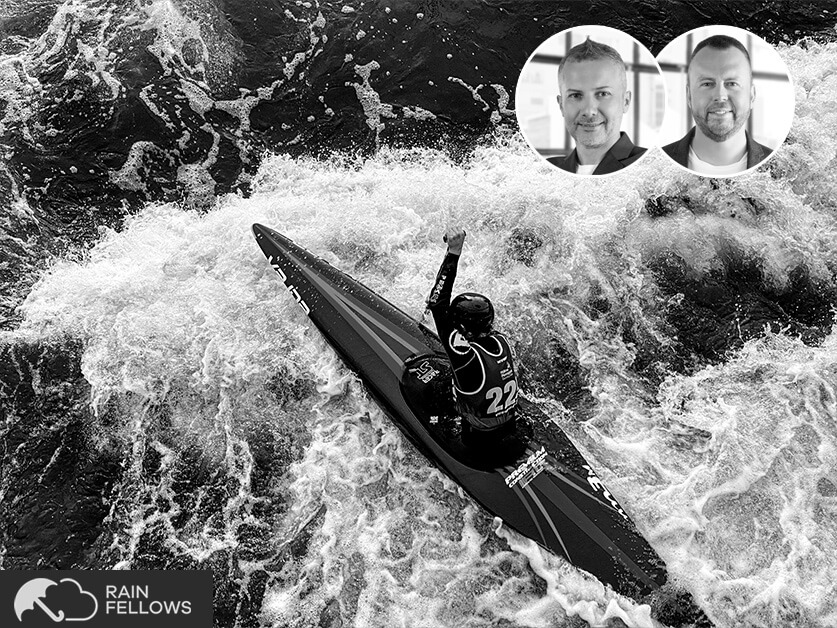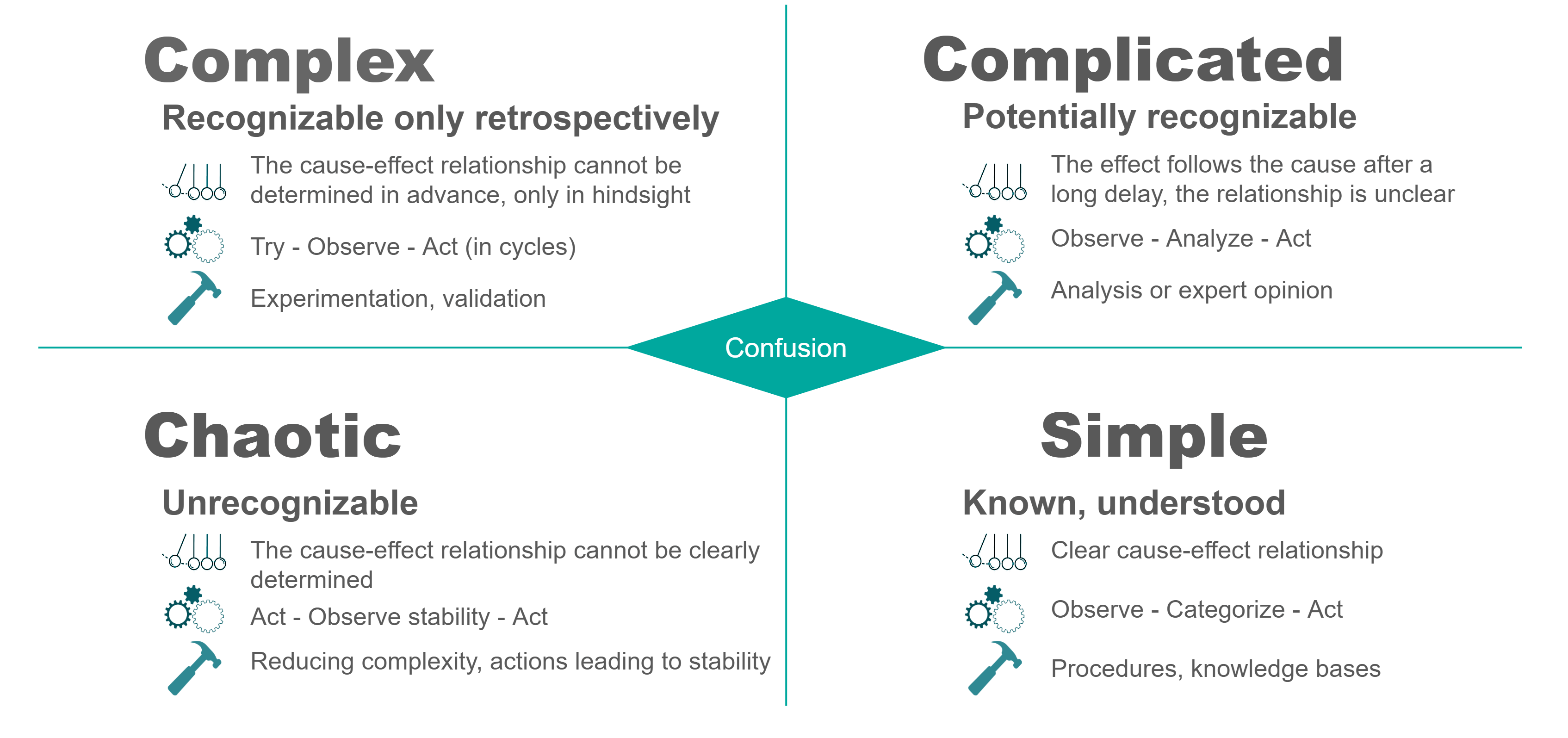Increasingly, more areas of human activity today are characterized by Volatility, Uncertainty, Complexity, and Ambiguity (VUCA) – we live in a so-called VUCA world.
In the context of the Cynefin Framework (https://thecynefin.co/about-us/about-cynefin-framework/), our challenges and opportunities are much more frequently situated in the Complex domain than in previous decades. Unlike in Stable or Complicated environments, we are unable, despite our best efforts, to predict the outcomes (effects) of our actions (causes) in advance. “We don’t know what we don’t know,” and therefore cannot prepare for it beforehand. There are no best practices or experts who “know the truth.” Long-term experience shows that planning based on trying to describe a goal/outcome and the path to it in detail does not and cannot lead to success under these conditions.
For leaders, this means the need to adapt quickly to changes, plan better even with a lack of information, and foster team flexibility and innovation. The goal is to improve the team’s ability to respond to unexpected challenges and shifting conditions.
The ability to adapt to this environment and function successfully in it long-term and sustainably requires, among other things, learning to radically simplify at various levels.
How to simplify?
1. Prioritization of Needs – focus on the most essential needs of stakeholders and satisfy them based on their importance/benefit/impact on them.
In a VUCA world (Complex domain of the Cynefin Framework), it is much better to meet the most critical needs as quickly as possible than to meet all needs but too late. Due to the volatility of these areas, it often happens that fulfilling even just the key needs turns out to be sufficient, as needs and their importance may change radically during solution implementation.
Questions to ask:
- Who, what, and why needs it? – do not overlook key stakeholders (roles/people).
- What is needed more and what is needed less? – not everything is equally important, but we don’t say it.
- What is the time horizon for the need (what comes first and what later)? – satisfying some needs is more urgent and may bring additional side benefits.
2. Minimalistic Solutions – minimize the solution to the smallest possible variant (Minimal Viable Product = MVP) that meets the key needs of stakeholders at the given time.
It is crucial to agree on this with stakeholders and jointly define criteria to evaluate its fulfillment! Simplifying the solution shortens the implementation time and thereby reduces the likelihood of critical external changes during it. It also reduces the need to allocate experts to multiple projects simultaneously, thereby minimizing unwanted dependencies between projects and context switching.
Questions to ask:
- What does the minimal solution need to fulfill to meet the most important needs of the most critical stakeholders as soon as possible?
- What explicitly does not need to be part of it?
- What would happen if it didn’t include AB? What if it couldn’t do CD? Is it enough if we only do EF?
- What specific criteria will we use with stakeholders to objectively evaluate whether their needs (or parts of them) are met at the given time?
3. Incremental Approach – break down solution implementation into smaller units (increments) and deliver them progressively.
A smaller unit is inherently simpler, with fewer dependencies (internal and external), easier to predict and estimate, and simpler to break down into smaller tasks.
We can also respond more flexibly to changes in priorities (changes in stakeholders’ needs over time, external changes, etc.) because after delivering a finished valuable increment (e.g., during a month or quarter), we can more easily adjust priorities than when everything is in progress and nothing usable is available (e.g., during a one-year or multi-year project).
Questions to ask:
- What can we deliver in the shortest possible time (quarter, month, week, day…) that has value for stakeholders and allows them to give us feedback as soon as possible about its benefit to them?
- What could we further reduce to deliver value in even less time?
4. Iterative Approach – deliver in shorter time intervals (iterations).
The shorter the iteration, the smaller the increment of the solution and the simpler it is. It is also easier for the team to maintain agreed-upon priorities and other agreements for the given iteration (“staying on track”).
Questions to ask:
- What cycles are we currently working in, and in which areas would it be beneficial to simplify by shortening them? For example, breaking a year-long project into quarters, filling quarters with monthly deliveries, and implementing them through weekly iterations.
5. Reusability – Look for opportunities to reuse already completed solutions, their components, and the approaches used in their creation. Also consider during creation how to ensure reusability not only for potential future initiatives but also in further iterations of work on the current solution.
Questions to ask:
- What existing solutions can we reuse or buy (solutions or their components, people’s experience, or expertise…) instead of creating them? Where is expensive “reinvention of the wheel” a risk?
- What reusable units (components, frameworks, knowledge bases, templates) can we create within the solution?
Authors: Martin Chmelař & Tomáš Tureček



